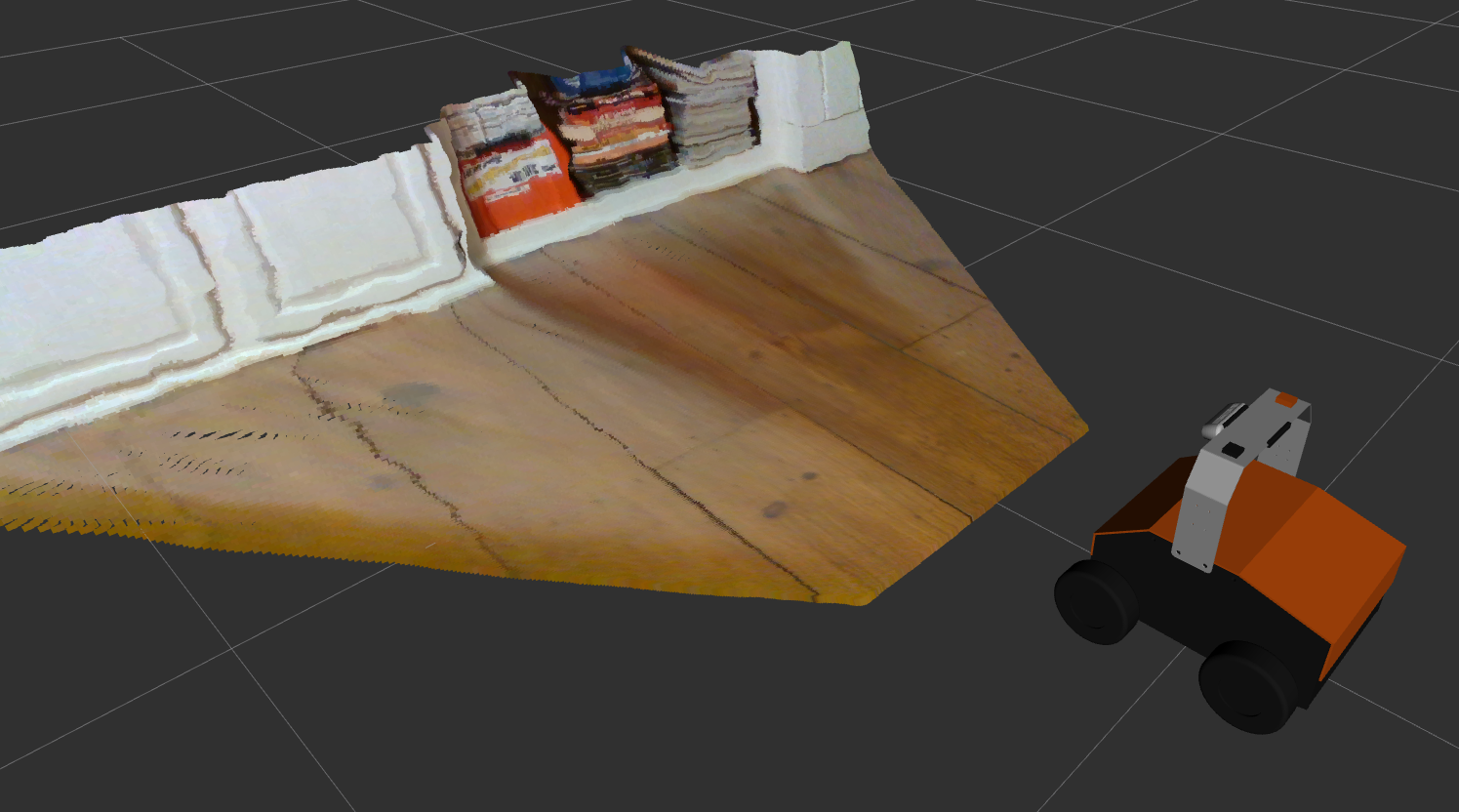Compass Calibration
25 Apr 2020robomagellan calibration robots ros 
I’ve made quite a bit of progress on the robomagellan robot recently. Over the past week I’ve installed the Realsense D435 camera, setup a URDF, and made some serious progress towards global localization.
Absolute Heading Reference
I’m using an EKF from the robot_localization package for outdoor localization. This package can merge the wheel odometry, IMU and GPS data together into a cohesive global pose and odometry. I’ll post more details about how I’m using robot_localization in a future post once I finish tuning things.
Since GPS data doesn’t include heading, robot_localization requires an IMU or odometry source with absolute heading information. While some higher end IMUs may put this information out directly, none of the IMUs I have offer a reliable absolute heading.
Today’s IMUs typically include a three-axis accelerometer, gyro and magnetometer. Most robotics people are pretty familiar with gyros and accelerometers, but less so with magnetometers, especially if they have primarily worked on indoor mobile robots. Magnetometers measure the geomagnetic field. If there were no disturbances and our magnetometer was accurately calibrated, then plotting the magnitude vector while rotating the sensor around would form a sphere with a radius equal to the local field strength. A projection of the magnitude vector into the horizontal plane gives us the equivelent of a compass bearing.
The imu_filter_madgwick ROS package is used to merge the accelerometer, gyro, and
magnetometer readings into an orientation estimate which we can feed into the EKF. Unfortunately,
the geomagnetic field is not very strong so calibration is quite important. This filter is
able to take in a magnetometer bias, which corresponds to what is often called the
hard iron offset 1. To get this bias vector I wrote a magnetometer_calibration
node in the robot_calibration package.
This calibration node rotates the robot around slowly while recording the magnetometer values. It then tries to fit them to a sphere. It outputs the center of that sphere (which corresponds to our bias or hard iron offset). It doesn’t currently do the more complex soft iron calibration since there isn’t a good way to merge that into the pipeline anyways. I’m planning to implement both the soft iron calibration, and the extensions to the filter node so it can use the soft iron calibration soon.
The output of the node looks something like this:
$ rosrun robot_calibration magnetometer_calibration
[ INFO]: Subscribing to /imu/mag
[ INFO]: Publishing to /cmd_vel
[ INFO]: Rotating robot for 60 seconds.
[ INFO]: Done rotating robot.
[ INFO]: Saving bagfile with 1337 poses.
[ INFO]: Ceres Solver Report: <truncated>
[ INFO]: mag_bias_x: 0.042075341
[ INFO]: mag_bias_y: -0.175981837
[ INFO]: mag_bias_z: -1.057499311
The mag_bias parameters can then be passed to the imu_filter_madgwick
as parameters (along with use_mag parameter being set to true). I still need to add
documentation on the new magnetometer calibration node, but the basics are:
- Topics (remap these to your actual topics):
- /imu/mag - the magnetometer data. Should be a sensor_msgs/MagneticField message.
- /cmd_vel - the commands to the mobile base. geometry_msgs/Twist.
- Parameters
- rotation_velocity - this is the angular velocity to command. Should be relatively low, but has to be high enough that your robot actually rotates. Defaults to 0.2 rad/s.
- rotation_duration - the robot has to make at least one full revolution in place. If your robot is really slow, this might need to be longer. Defaults to 60 seconds.
The node also has some other modes, such as manual rotation (in case your IMU isn’t actually mounted in a robot yet). Right now the best source of documentation is the code itself. I plan to add documentation to the robot_calibration README later this week and then get a new release pushed to debians. UPDATE: documentation is now in the README.
Next Steps
I’m still working on tuning the EKF parameters. I’ve also started to write some GPS-waypoint navigation code. Both of these topics will be the subject of upcoming posts.